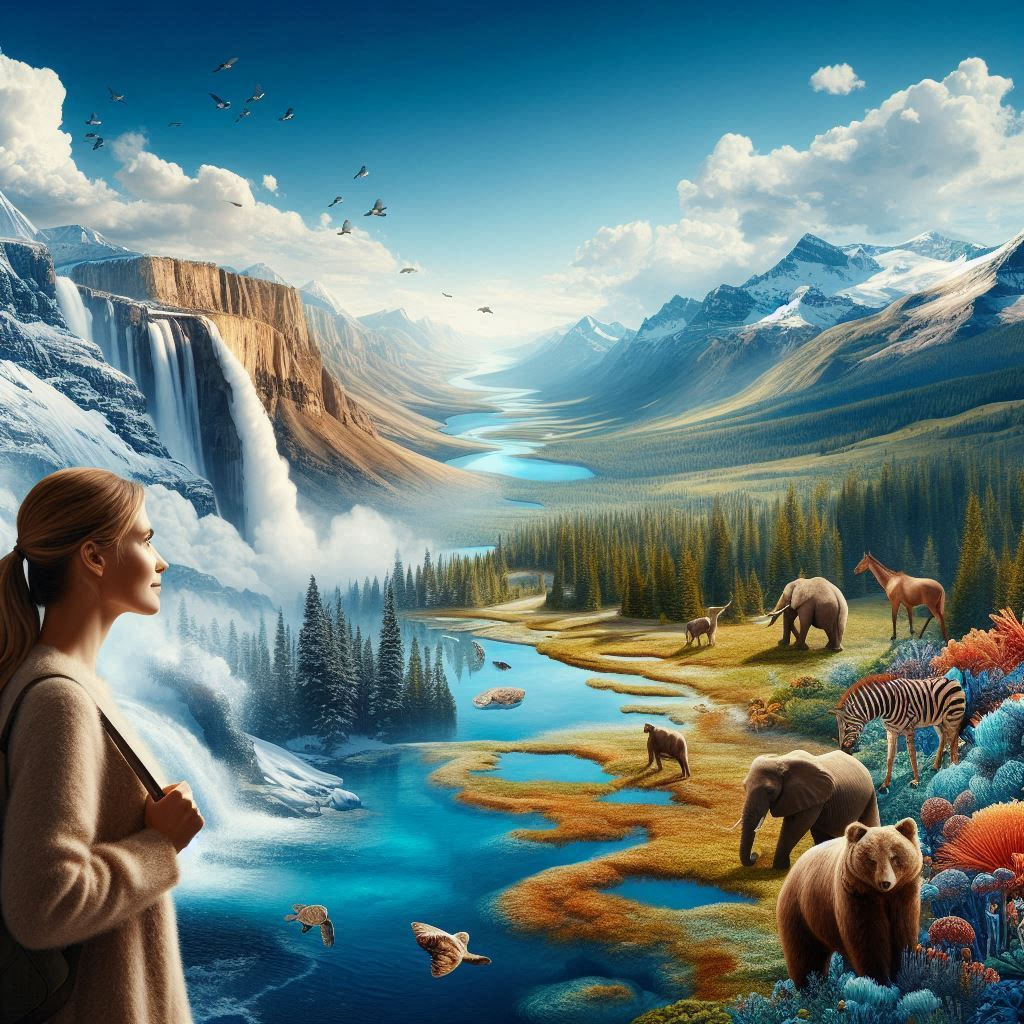Not only do national parks preserve stunning natural settings, but they also harbor some of the planet’s most fascinating facts and unique features.
These parks are havens for a range of ecosystems, beautiful scenery, and even objects from the past.
Discover these seven fascinating facts about national parks worldwide that will surprise you with their majesty and importance.

7 Fascinating Facts About National Parks Around the World
1. Yellowstone – The World’s First National Park
The first national park in the world was created in 1872 and is located in the United States’ Yellowstone National Park.
Developed to preserve its exceptional geothermal characteristics, including the well-known Old Faithful geyser that emits amazing regularity, this park is a pioneer in its field.
With the construction of Yellowstone, a global effort to protect the environment for future generations was launched.
Together with a wide variety of species, the park is home to grizzly bears, wolves, herds of bison, and elk in addition to geysers.
Another Yellowstone fascinating facts, which spans more than 2.2 million acres and provides a singular combination of natural beauties, is a site that nature followers simply must see.
2. Sagarmatha – Home to the World’s Tallest Mountain
Situated within the Himalayas, Nepal’s Sagarmatha National Park is the majestic home of the planet’s highest peak, Mount Everest.
Mountaineers and explorers from all over the world have Mount Everest on their bucket lists because it elevated 8,848 meters (29,029 feet) above sea level.
In addition to providing breathtaking views of Mount Everest, Sagarmatha National Park, a UNESCO World Heritage Site, safeguards a wide range of wildlife, including the elusive snow leopard and the red panda.
The Sherpa people, who have coexisted peacefully with their hostile surroundings for millennia, are also inhabitants of the park’s steep hills and deep valleys.
3. Kruger – A Wildlife Haven in South Africa
Spanning nearly 19,485 square kilometers (7,523 square miles), Kruger National Park is one of Africa’s largest and most renowned game reserves.
Located in northeastern South Africa, Kruger is a wildlife enthusiast’s dream, offering the chance to see the Big Five like lions, elephants, rhinos, leopards, and buffalo in their natural habitat.
The park’s diverse fascinating facts of ecosystems, from savannas to riverine forests, support a wide range of species, including over 500 bird species.
Kruger National Park is also a leader in conservation, engaging advanced anti-poaching measures, and contributing to global wildlife research.
Visitors can explore the park through self-drive safaris or guided tours, making it accessible to all kinds of travelers.
4. Banff – Canada’s First National Park
As the oldest national park in Canada, Banff National Park was created in 1885 and is a representation of the natural legacy of the nation.
Situated in the center of the Rocky Mountains in Alberta, Banff is well-known for its stunning natural beauty, which includes towering peaks, deep woods, and glacial lakes like the well-known Lake Louise.
There are many different outdoor fascinating facts available in the park, including hiking, skiing, observing wildlife, and hot springs.
Nestled inside the park, Banff’s historic town offers a quaint starting point for exploring this amazing wilderness.
Banff is still one of the most well-liked tourist attractions in Canada because it combines natural beauty and extensive history.
Read: Dark Facts About the Fashion Industry You Didn’t Know
5. Great Barrier Reef – The World’s Largest Coral Reef System
The world’s largest and most complex coral reef system is preserved in Australia’s Great Barrier Reef Marine Park, a natural marvel that can be seen from space.
The Queensland coast’s massive reef system, spanning over 2,300 kilometers (1,430 miles), is home to an incredible wide variety of marine life, including over 1,500 fish species, 411 types of hard coral, and 134 types of sharks and rays.
In addition to being a UNESCO World Heritage Site, the Great Barrier Reef provides critical support to marine conservation efforts.
Pollution, bleached coral, and climate change pose serious risks to the reef.
To ensure that future generations can continue to be in wonder about this happiness ecosystem’s underwater treasures, efforts are being made to safeguard and restore it.
6. Tikal – Preserving Ancient Maya Civilization
The ruins of the ancient Maya civilization can be found in Guatemala’s Tikal National Park, a singular combination of scenic beauty and archaeological curiosity.
A UNESCO World Heritage Site, the park is home to some of the most remarkable Maya structures, including towering pyramids, temples, and palaces, spread across 575 square kilometers (222 square miles) of lush rainforest.
With constructions that date back to 400 BC, Tikal was once one of the most powerful city-states in the entire Maya civilization.
In exploring these historic fascinating facts, park visitors can see a wide range of animals, such as howler monkeys, toucans, and jaguars.
The rich natural and cultural legacy of Central America is displayed at Tikal National Park.

7. Galápagos – A Living Laboratory of Evolution
Known for being home to species that are unique to Earth, the Galápagos National Park in Ecuador is a living laboratory where evolution is taking place.
The Pacific Ocean’s Galápagos Islands are well-known for their unusual fauna, which includes giant tortoises, marine iguanas, and Darwin’s finches, among other types of birds.
Charles Darwin’s revolutionary theory of evolution by natural selection originated from his observations of these animals made during his 1835 visit to the islands.
As protected regions today, the Galápagos National Park and the adjacent marine reserve guarantee the survival of this remarkable ecosystem.
The park is still a key location for scientific study and protection, and it is recognized as a UNESCO World Heritage Site.
Bottom Line
These 7 amazing worldwide fascinating facts about national park show the remarkable diversity and significance of these protected locations.
